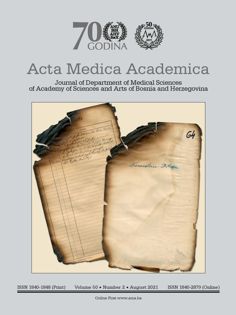Trigeminal Neuralgia and Potential Correlations with Anatomical Variations of the Trigeminal Nerve
DOI:
https://doi.org/10.5644/ama2006-124.344Keywords:
Trigeminal Neuralgia, Trigeminal Nerve Anatomy, Trigeminal Nerve SurgeryAbstract
Objective. Trigeminal neuralgia is a long-term facial pain syndrome. Our aim was to review the anatomy of the trigeminal nerve and its anatomical relationship with the adjacent structures that may contribute to the pathogenesis of trigeminal neuralgia
Methods. Eligible articles were identified by a search of the Medline Embase, Pubmed Cinahl and Google Scholar bibliographical databases. We checked all the references of the relevant reviews and eligible articles that our search retrieved, in order to identify potentially eligible conference abstracts. Titles of interest were further reviewed by abstract. Case reports were excluded.
Results. Trigeminal neuralgia syndrome seems to be caused by anatomical variations of the trigeminal nerve and its adjacent anatomical structures, mainly through compression. We depict the causes, the pathogenesis, and the clinical manifestations of the syndrome. The classification, diagnostic approach, differential diagnosis, and treatment modalities are also presented and they may be personalized according to the anatomical variations of the trigeminal nerve present, which may lead to trigeminal neuralgia syndrome.
Conclusion. It is very important to be very careful in cases of new emerging neuralgia and to avoid the term “idiopathic” until proven otherwise by validating the newer and more appropriate tests and diagnostic criteria. Current data are insufficient and future research is needed in order to discover innovative and more effective treatments of trigeminal neuralgia, considering the anatomy and the anatomical variations of the trigeminal nerve.






